 |
 |
 |
| |
HIV Trends in Metropolitan US Cities from 2014-2022:
Baseline For The Ending The Epidemic Initiative
|
| |
| |
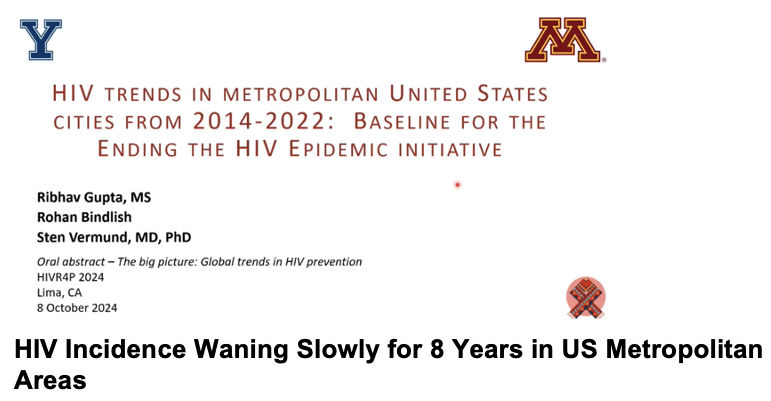
HIV Incidence Waning Slowly for 8 Years in US Metropolitan Areas
HIVR4P 2024, Fifth HIV Research and Prevention Conference, October 6-10, 2024, Lima
Mark Mascolini
HIV incidence dropped in US metropolitan areas from 2014 through 2022, and areas targeted by the Ending the HIV Epidemic (EHE) saw greater ebbs than non-EHE regions [1]. University of Minnesota and Yale School of Public Health researchers who conducted this study believe some of their findings raise questions about EHE implementation.
The EHE initiative aims to slice HIV incidence (new infections) by 75% by 2025 and by 90% by 2030 in the 57 counties or states that account for half of new HIV cases in the US. In this analysis, the Minnesota/Yale team set out to sketch the early impact of EHE and to provide a counterfactual comparator for future EHE program analyses.
Phase 1 of EHE runs from 2020 to 2025 and includes 57 priority jurisdictions (50 counties and 7 states) where half of new HIV diagnoses are made. The Minnesota/Yale analysis included 46 of the EHE's 57 counties and states where EHE interventions began (46 Metropolitan Statistical Areas, or MSAs) and compared them with 73 other MSAs not yet participating in EHE. Interventions involve improved diagnostics, treatment, prevention, and response. The researchers characterized their work as a "quasi-experimental longitudinal study using observational data." Two key factors in their Gaussian linear regression difference-in-difference model are baseline change in HIV incidence over time and the added impact of the EHE intervention on HIV incidence.
From 2014 through 2022, clinicians diagnosed 384,793 incident cases of HIV infection across the 119 MSAs analyzed. MSAs with the highest HIV incidence lay mostly in the southern United States: Miami, Memphis, Fort Lauderdale (FL), Atlanta, and Bakersfield (CA). Throughout 2014-2022, change in MSA-level incidence averaged -4.94% (range -55.14% to 333.3%). In MSAs targeted by ESE, HIV incidence fell from 21.22 per 100,000 person-years in 2014 to 16.15 per 100,000 person-years in 2022. In contrast, MSAs not targeted by EHE had a lower initial HIV incidence in 2014 (9.55 per 100,000), and that rate faded modestly (to 8.65 per 100,000) in 2022.
Although HIV incidence dropped more in EHE-targeted MSAs than in non-EHE MSAs over the entire study period, the difference-in-difference model determined that incidence rose after ESE launched in 2019 in ESE-targeted MSAs (average annual change 2.07, 95% confidence interval 0.68 to 3.46)) while falling in non-EHE MSAs (average annual change -0.73, 95% confidence interval -0.91 to 0.56). This difference reflects choosing EHE-target areas that contribute most new HIV cases in the country and perhaps more avid HIV screening in those areas.
The Minnesota/Yale team cautioned that the COVID epidemic suppressed HIV incidence calculations because HIV testing and reporting waned in that period. They proposed that high variability in HIV incidence from one EHE MSA to another "raises questions on program implementation and requires further examination to support local resource allocation."
References
1. Gupta R, Bindlish R, Vermund S. HIV trends in metropolitan U.S. cities from 2014-2022: baseline for the U.S. Ending the HIV Epidemic (EHE) initiative. HIVR4P 2024, Fifth HIV Research and Prevention Conference, October 6-10, 2024, Lima. Abstract PRC002.
2. Centers for Disease Control and Prevention (CDC). Ending the HIV epidemic in the US (EHE). https://www.cdc.gov/ehe/index.html
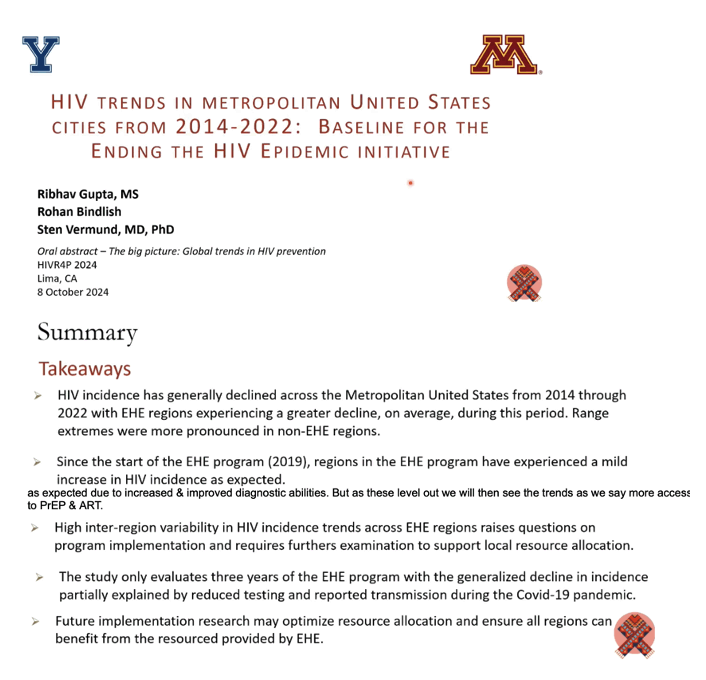
ABSTRACT
BACKGROUND: The EHE initiative aims to decrease HIV incidence by 90% by 2030 in the 57 counties/states responsible for half the incident infections. EHE was announced in 2019 and phase I nears completion, our analysis provides a counterfactual comparator for future evaluation.
METHODS: We used 2014-2022 Metropolitan Statistical Area (MSA) data to compare trends in HIV incidence rate between MSAs subsuming EHE regions (N=46) and other MSAs (N=73). A difference-in-difference analysis illustrated potential early-stage program effects.
RESULTS: Across 119 MSAs from 2014-2022, 384,793 HIV cases were diagnosed with a mean change in MSA-level incidence of -4.94% (range:-55.14-333.3%) over the period. On average, MSA-level incidence changed by -19.70% (range:-55.14% to 19.30%) amongst MSAs including EHE regions and by 4.35% (range:-59.1% to 333.33%) in other MSAs over the study. A difference-in-difference analysis indicated the incidence change among EHE MSAs was 2.07 cases per 100,000 people-years (p=0.03) higher than the base change rate in 2020-2022. These findings were robust to timeframe variations.
CONCLUSIONS: Although MSAs including EHE regions experienced greater HIV incidence reductions compared to other MSAs, high inter-regional variability requires exploration of program implementation and transmission drivers. These trend insights provide a baseline to aid future assessments of EHE program impacts
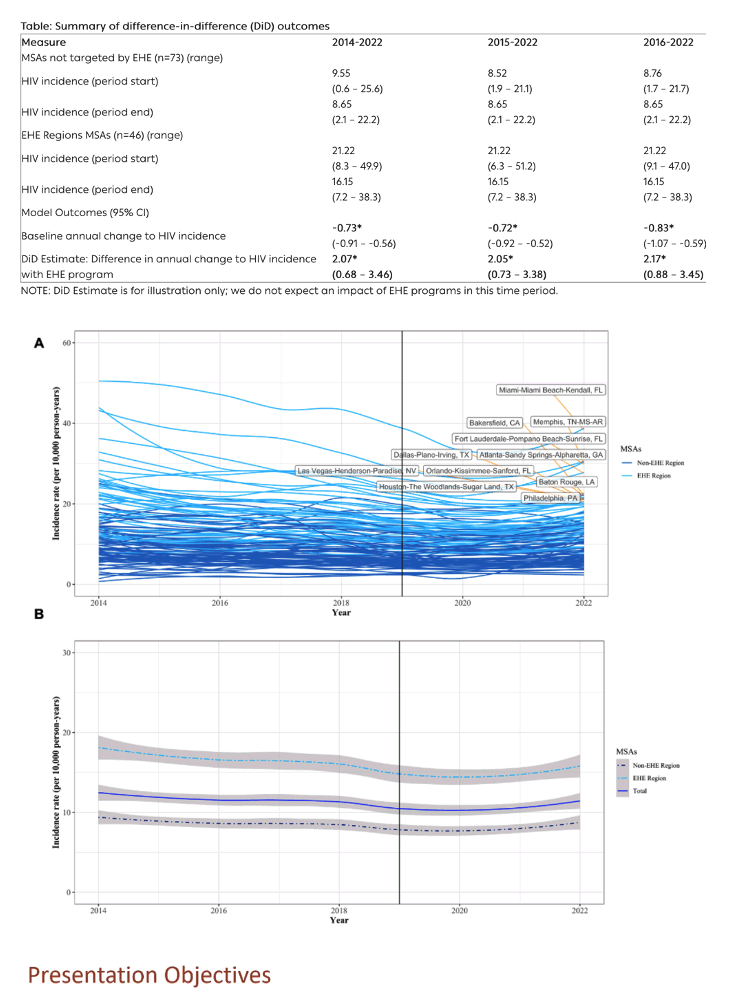
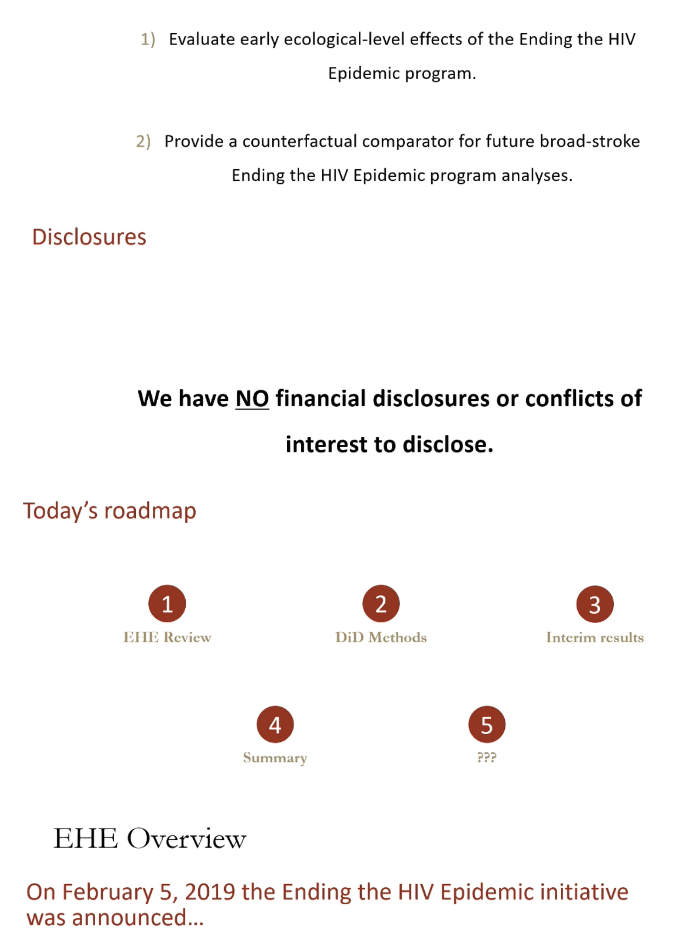
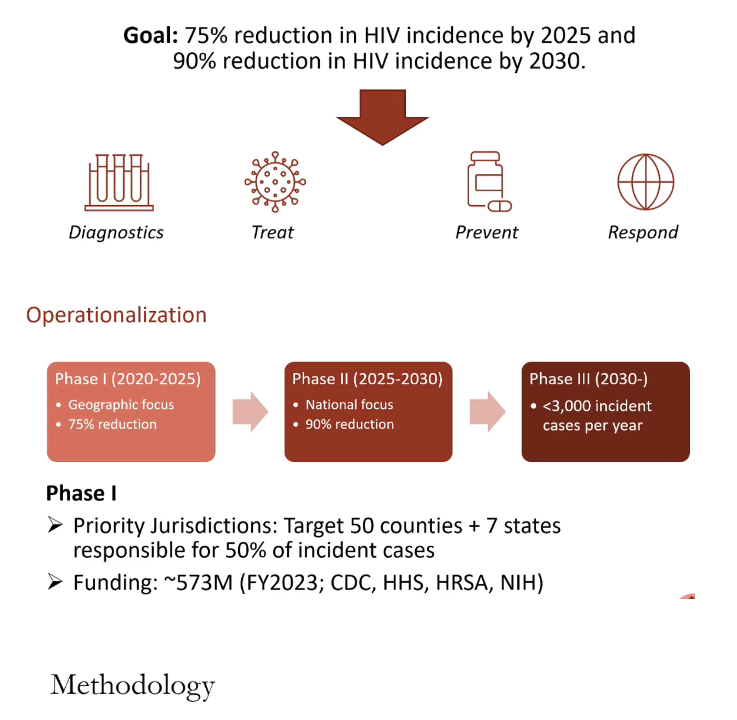
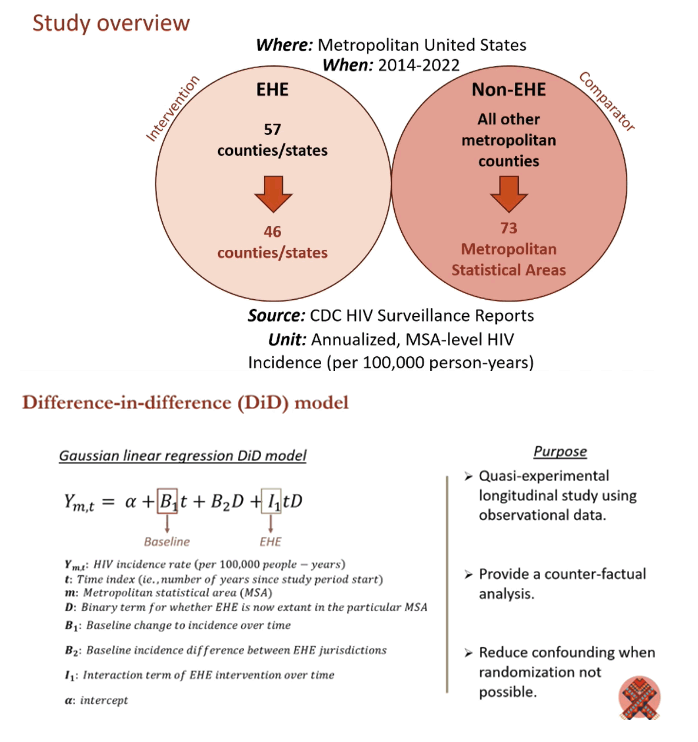
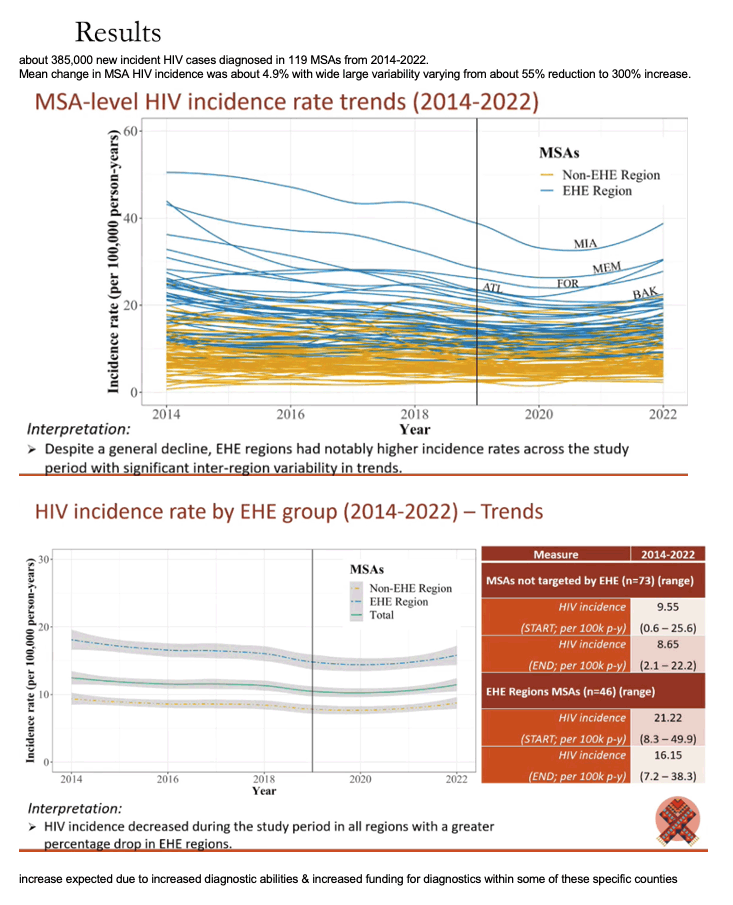
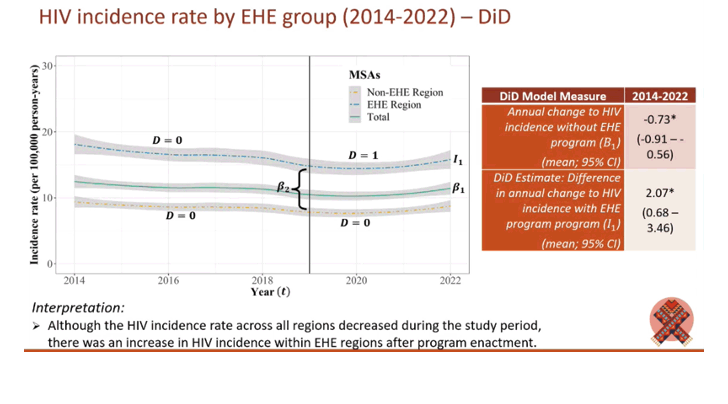
|
| |
|
 |
 |
|
|